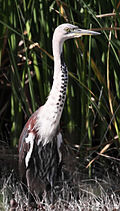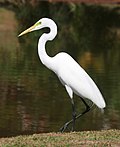Superregnum: Eukaryota
Cladus: Unikonta
Cladus: Opisthokonta
Cladus: Holozoa
Regnum: Animalia
Subregnum: Eumetazoa
Cladus: Bilateria
Cladus: Nephrozoa
Superphylum: Deuterostomia
Phylum: Chordata
Subphylum: Vertebrata
Infraphylum: Gnathostomata
Megaclassis: Osteichthyes
Cladus: Sarcopterygii
Cladus: Rhipidistia
Cladus: Tetrapodomorpha
Cladus: Eotetrapodiformes
Cladus: Elpistostegalia
Superclassis: Tetrapoda
Cladus: Reptiliomorpha
Cladus: Amniota
Classis: Reptilia
Cladus: Eureptilia
Cladus: Romeriida
Subclassis: Diapsida
Cladus: Sauria
Infraclassis: Archosauromorpha
Cladus: Crurotarsi
Divisio: Archosauria
Cladus: Avemetatarsalia
Cladus: Ornithodira
Subtaxon: Dinosauromorpha
Cladus: Dinosauriformes
Cladus: Dracohors
Cladus: Dinosauria
Ordo: Saurischia
Cladus: Eusaurischia
Subordo: Theropoda
Cladus: Neotheropoda
Cladus: Averostra
Cladus: Tetanurae
Cladus: Avetheropoda
Cladus: Coelurosauria
Cladus: Tyrannoraptora
Cladus: Maniraptoromorpha
Cladus: Maniraptoriformes
Cladus: Maniraptora
Cladus: Pennaraptora
Cladus: Paraves
Cladus: Eumaniraptora
Cladus: Avialae
Infraclassis: Aves
Cladus: Euavialae
Cladus: Avebrevicauda
Cladus: Pygostylia
Cladus: Ornithothoraces
Cladus: Ornithuromorpha
Cladus: Carinatae
Parvclassis: Neornithes
Cohors: Neognathae
Cladus: Neoaves
Cladus: Aequornithes
Ordo: Pelecaniformes
Familia: Ardeidae
Subfamilia: Ardeinae
Genus: Ardea
Species: A. alba - A. cinerea – A. cocoi – A. goliath – A. herodias – A. humbloti – A. insignis – A. intermedia – A. melanocephala – A. pacifica – A. picata – A. purpurea – A. sumatrana
Nomen dubium: A. aequinoctialis
Name
Ardea Linnaeus, 1758
Type species: Ardea cinerea Linnaeus, 1758
Fixation: Subsequent designation by Gray 1840: 66 BHL
References
Linnaeus, C. 1758. Systema Naturae per regna tria naturae, secundum classes, ordines, genera, species, cum characteribus, differentiis, synonymis, locis. Editio Decima, Reformata. Tomus I. Holmiæ (Stockholm): impensis direct. Laurentii Salvii. 824 pp. DOI: 10.5962/bhl.title.542 BHL p. 141 BHL Reference page.
Gray, G.R. 1840. A list of the genera of birds, with an indication of the typical species of each genus, compiled from various sources. 80 pp. Richard and John Taylor (London). BHL DOI: 10.5962/bhl.title.13777 Reference page.
Vernacular names
български: Чапли
English: Heron
español: Garza
italiano: Airone
lietuvių: Tikrieji garniai
português: Garça
русский: Настоящие цапли
Türkçe: Balıkçıl
中文: 鷺屬
Ardea is a genus of herons. The genus name comes from Latin ardea "heron". These herons are generally large in size, typically 80–100 cm or more in length.
The great egret (Ardea alba, left) resembles the other Ardea in habitus, and the little egret (Egretta garzetta, right) only in color.
These large herons are associated with wetlands where they prey on fish, frogs, and other aquatic species.
Most members of this almost worldwide group breed colonially in trees, building large stick nests. Northern species such as great blue, grey, and purple herons may migrate south in winter, although the first two do so only from areas where the waters freeze.
These are powerful birds with large spear-like bills, long necks and long legs, which hunt by waiting motionless or stalking their prey in shallow water before seizing it with a sudden lunge. They have a slow steady flight, with the neck retracted as is characteristic of herons and bitterns; this distinguishes them from storks, cranes, flamingos, and spoonbills, which extend their necks.
Taxonomy
The genus Ardea was introduced in 1758 by the Swedish naturalist Carl Linnaeus in 1758 in the tenth edition of his Systema Naturae.[1] The genus name is the Latin word meaning "heron".[2] The type species was designated as the grey heron (Ardea cinerea) by George Robert Gray in 1840.[3]
Some members of Ardea are clearly very closely related, such as the grey, great blue, and cocoi herons, which form a superspecies. However, the great egret, in particular, has been placed in other genera by various authors as Egretta alba and Casmerodius albus. Nevertheless, this species closely resembles the large Ardea herons in everything but color, whereas it shows fewer similarities to the smaller white egrets.
Species
The genus contains twelve species:[4]
| Image | Scientific name | Common Name | Distribution |
|---|---|---|---|
 |
Ardea cinerea | Grey heron | Norway and Sweden, Northern Europe and Asia eastwards as far as the Ural Mountains, northern Spain,France, central Italy, the Balkans, the Caucasus, Iraq, Iran, India, and Myanmar (Burma). Africa south of the Sahara Desert, the Canary Islands, Morocco, Algeria, Tunisia, and many of the Mediterranean Islands |
 |
Ardea herodias | Great blue heron | North America, as far north as Alaska and the southern Canadian provinces in the summer. In winter, the range extends south through Florida, Mexico, and the Caribbean to South America |
 |
Ardea cocoi | Cocoi heron | South America |
 |
Ardea pacifica | White-necked heron or Pacific heron | Australian continent |
 |
Ardea melanocephala | Black-headed heron | sub-Saharan Africa and Madagascar. |
 |
Ardea humbloti | Humblot's heron | Madagascar |
 |
Ardea insignis | White-bellied heron | eastern Himalayas of India and Myanmar. |
 |
Ardea sumatrana | Great-billed heron | Southern Asia and Australasia including Australia, India, Indonesia, Malaysia, and the Philippines. |
 |
Ardea goliath | Goliath heron | sub-Saharan Africa |
 |
Ardea purpurea | Purple heron | Africa, central and southern Europe, and southern and eastern Asia |
 |
Ardea alba | Great egret or great white egret | Asia, Africa, the Americas, and southern Europe. |
 |
Ardea intermedia | Intermediate egret | Southeast Asia and Australia. |
A number of Ardea species are only known from subfossil or fossil bones. Their placement in Ardea versus Egretta may be provisional:
Bennu heron, Ardea bennuides (prehistoric)
Ardea sp. (Middle Miocene of Observation Quarry, US) (fossil)
Ardea sp. (Late Miocene of Love Bone Bed, US) (fossil)
Ardea polkensis (Early Pliocene of Bone Valley, US) (fossil)
Ardea sp. (Early Pleistocene of Macasphalt Shell Pit, US) (fossil)
Ardea howardae (fossil)
The remains described as Ardea perplexa are nowadays usually believed to be from an ibis of the genus Geronticus or closely related genera. "Ardea formosa" (a nomen nudum) is now Proardeola, "Ardea" brunhuberi and "A." similis refer to a misidentified cormorant (Phalacrocorax intermedius) and partridge (Miogallus altus), respectively. "Ardea" lignitum – a fossil of quite recent age as it seems – is some large owl, perhaps even a Eurasian eagle-owl (Bubo bubo).
References
Linnaeus, Carl (1758). Systema Naturae per regna tria naturae, secundum classes, ordines, genera, species, cum characteribus, differentiis, synonymis, locis (in Latin). Vol. 1 (10th ed.). Holmiae (Stockholm): Laurentii Salvii. p. 141.
Jobling, James A. (2010). The Helm Dictionary of Scientific Bird Names. London: Christopher Helm. p. 54. ISBN 978-1-4081-2501-4.
Gray, George Robert (1840). A List of the Genera of Birds : with an Indication of the Typical Species of Each Genus. London: R. and J.E. Taylor. p. 66.
Gill, Frank; Donsker, David; Rasmussen, Pamela, eds. (July 2021). "Ibis, spoonbills, herons, Hamerkop, Shoebill, pelicans". IOC World Bird List Version 11.2. International Ornithologists' Union. Retrieved 10 August 2021.
Retrieved from "http://en.wikipedia.org/"
All text is available under the terms of the GNU Free Documentation License

